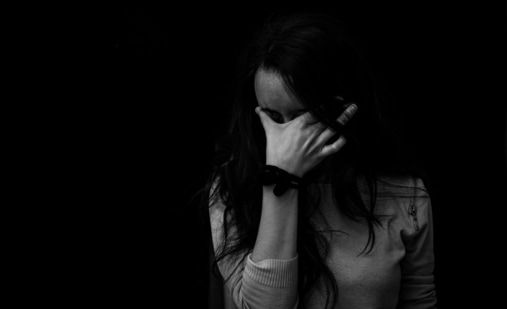Study examines how different factors impact anxiety disorders in men and women
Anxiety disorders occur twice as often in women than men, and social and cultural factors likely play an important role in the development of anxiety in females, De Oliveira said. The COVID-19 pandemic heavily influenced anxiety in people.
anxAn animal study led by researchers at Indiana University School of Medicine examined how different factors impact anxiety disorders in men and women.

The team studied male and female rodent models to better understand sex differences in biological responses related to anxiety. They published their findings in the journal Psychopharmacology.
The study examines how biological factors impact anxiety disorders, specifically in females. They found that anxiety in females intensifies when there's a specific, life-relevant condition.
The team, led by Thatiane De Oliveira Sergio, PhD, a postdoctoral fellow in the laboratory of Woody Hopf, PhD, professor of psychiatry and primary investigator at Stark Neurosciences Research Institute, studied male and female rodent models to better understand sex differences in biological responses related to anxiety.
Anxiety disorders occur twice as often in women than men, and social and cultural factors likely play an important role in the development of anxiety in females, De Oliveira said. The COVID-19 pandemic heavily influenced anxiety in people.
According to the Centers for Disease Control and Prevention, in June 2020- a few months into the pandemic-- 13 per cent of Americans started using or increasing substance use to cope with their emotions and stress due to the unknowns at that time about the pandemic.
Knowing that women have more incidence of anxiety than men, De Oliveira said the roles for many women have amplified during the pandemic- working remotely, teaching children in virtual school, everyday tasks, errands. She said these life-relevant conditions could have increased their anxiety.
"This work is giving us a foundation to start and explore anxiety behaviours that are very important and even more relevant now," De Oliveira said.
While anxiety in humans is complex, anxiety in animals is based solely on biology. "Biological factors play an important role in these types of mood disorders, but it can be hard to untangle the mechanisms that drive anxiety in humans," De Oliveira said. "This rodent work is important to do to help develop more effective and personalized treatments."
Through study studying both male and female rodent models, they found that females and males were very different in their response to the most life-relevant aspects related to anxiety, Hopf said.
In one of the behavioural tasks, rodents had to grab pellets of food that were in the brightly lit centre of a big arena. Rats don't like the light, so this creates an anxious conflict. In this task, female rats took longer to touch the food and ate less food relative to males.
The researchers also gave the rodents diazepam- a drug used to treat anxiety -- and it greatly reduced anxiety in females, but it had little effect in males when interacting with food.
There were also other measures that showed similarities between males and females, Hopf said, including how many times a rat approached the lit centre and how long it remained there. Thus, only the parts of the task that were most life-relevant -- in this case food -- showed sex differences.
Previous studies support the idea that anxiety in females is focused on the most life-relevant aspects of a situation, Hopf said, which aligned with their findings. For example, females -- more than males in both studies- showed greater responses to the urine of a predator and had higher anxiety when in the presence of a second rat that was free to wander around.
"Knowing that anxiety can manifest from different concerns in males and females, with females particularly attuned to the most life-relevant conditions, is a valuable step towards seeking better treatments based on sex differences," De Oliveira said.
This research was funded by the National Institute of Alcohol Abuse and Alcoholism, part of the National Institutes of Health. (ANI)
Catch your daily dose of Fashion, Health, Festivals, Travel, Relationship, Recipe and all the other Latest Lifestyle News on Hindustan Times Website and APPs.



